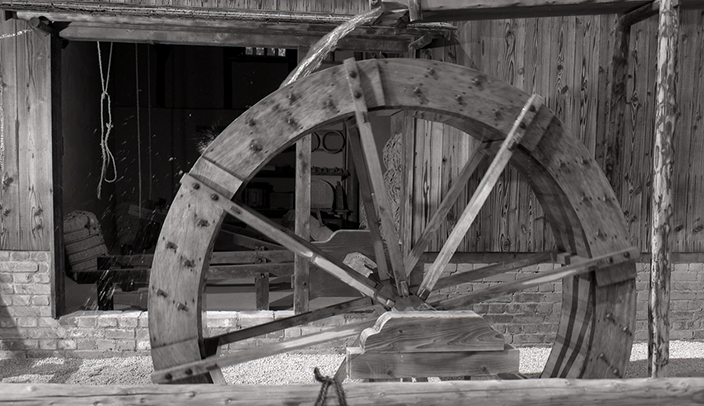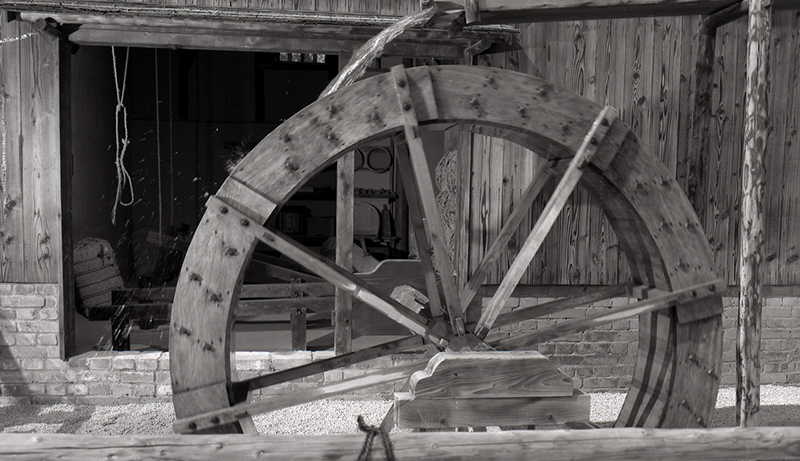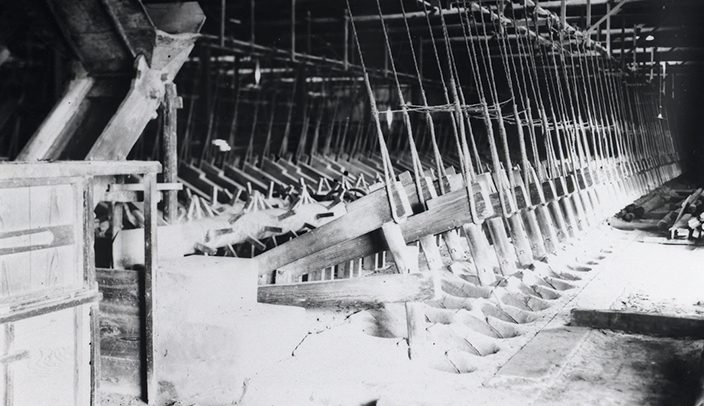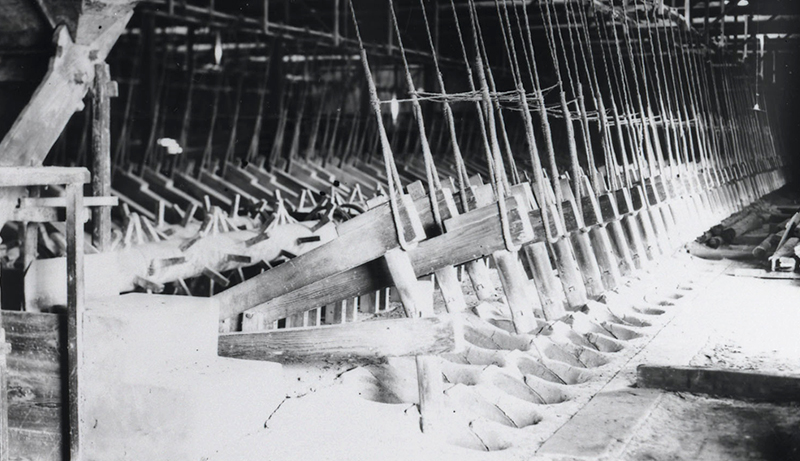Rice Polishing and the Water Mill
From the introduction of short grain japonica rice cultivation to Japan via China and Korea in 400 BC until approximately the 17th century, rice was treated as a luxury item and neither rice nor rice products (such as sake) were readily available to the common people. Aristocrats and nobles, however, were able to enjoy the luxury of rice although the quality of this rice was very different from the white rice typically consumed today. Preferring rice only lightly or semi-polished, a process which could be completed by relatively simple hand or foot operated rice milling apparatuses, the need for advanced rice polishing techniques did not advance in Japan until the 17th century. It is no mystery that this need coincided when both rice and sake became more readily available to the middle classes. In regards to sake brewing, the old-fashioned rough polishing rate could cause dramatic differences among various batches of sake since the proteins and minerals not polished off the rice could cause significant differences in both flavor and appearance. In the 1600s, however, enterprising brewers of Nada took an interest in the connection between sake milling rates and successful brews and later revolutionized the industry through the employment of water wheels to polish rice.


Although water wheel technology for polishing rice was first introduced into Japan from Korea in the 7th century, renewed interest in the improvement of rice milling didn't occur until the 17th century when the Japanese wanted to change and improve both rice for eating and for using to make sake. During the 18th century, an enterprising Nada sake brewer, Yamamura Tazaemon, officially adopted water wheel milling practices and revolutionized the industry. (Yamamura Tazaemon is also credited for discovering the benefits for using miyamizu water in the fermentation process.)


The Nada brewers soon came to realize that they could not only polish more rice per day but they could also polish to a better polishing rate. According to some estimates, a single person operating the popular foot powered mill "ashifumi" could produce only 23-24kg of 90% milled rice (10% milled away) per day. However, a water wheel could polish about 2,400 kg of rice per day to a polishing rate of 80% (20% milled away). The sakes made with improved milling rates were prized for their "tanrei" (smooth, crisp, and refreshing) qualities and became a favorite of connoisseurs. Although modern technology later replaced water power at the approach of the 20th century, the Nada brewers and their sake were already famous for the pioneer spirit and dedication to ever improving quality. This spirit continues today with Hakushika and our never-ending search to improve and perfect the art of sake making.
